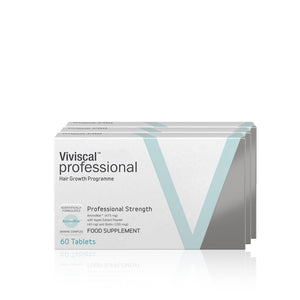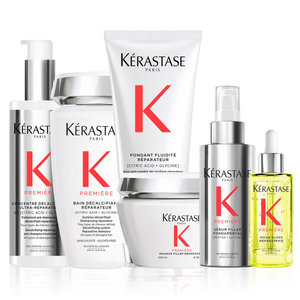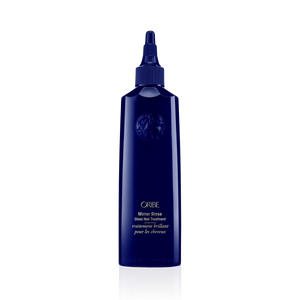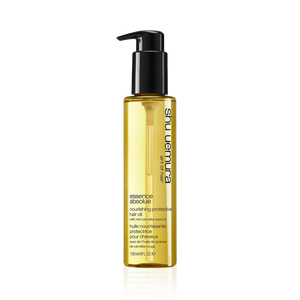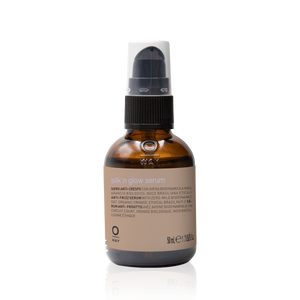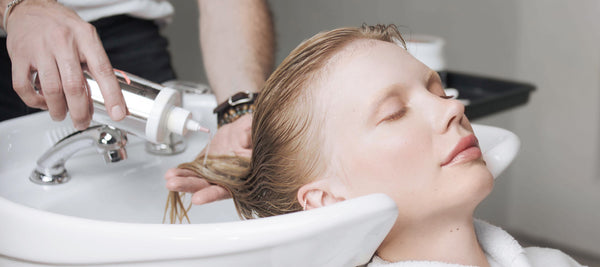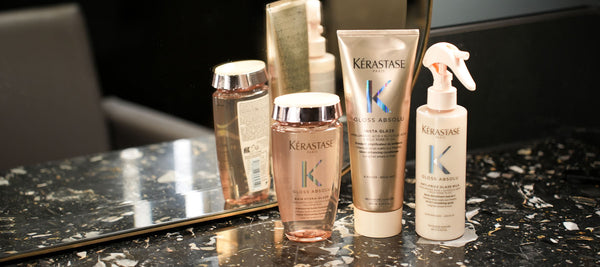Glossy hair goals: The shine treatments and techniques you need
Ever wondered if there’s a difference between shiny and glossy hair?
While the terms are often used interchangeably, experienced hairdressers know there’s a subtle difference.
When we talk about shine, we mean the natural luminosity seen when strands are healthy and nourished. At the peak of condition, hair will have mirror-like radiance from root to tip.
Glossy hair, on the other hand, is created with the help of oils, serums or other styling products. Even dry or damaged hair can appear glossy with a little help from your glam squad, but truly shiny locks take significantly more effort, particularly if you have textured hair.
“If your natural hair texture is curly or coily, due to the wave pattern of their hair you're less likely to see the natural shine coming through compared to straight hair,” says colour technician Sonia Surani.
For hair to be naturally shiny, the outer layer of the hair strand needs to lie flat, she explains: “The best way to describe it is like fish scales. When they’re sitting straight, the light will bounce off better than when they’re roughed up.” If a client comes in with dull hair, that would “indicate there's an issue with the hair cuticle where it's slightly rough.”
So what can be done to smooth the cuticle and turn up the luminosity on your hair? Here, the team talk through everything you need to know about achieving your glossy and shiny hair goals…
WHY IS MY HAIR LACKING SHINE?
As Sonia explained, the ultimate cause of dull hair is a rough cuticle, but there are a range of reasons why the ‘scales’ aren’t as smooth as they should be
“If you have your hair lightened, that can damage the cuticle, as can harsh hair dyes with darker pigments,” Sonia says.
“In London, we’ve got hard water, which can cause a build-up of unwanted particles and really dull out the hair,” but she believes purple shampoo is an even bigger culprit. “People either leave it on for too long or use it too often. By doing that, they're depositing purple pigments into the cuticle that really dulls the hair and makes it super dry.”
Silicone particles, which are (ironically enough) found in gloss-giving products, can build up over time, weighing the hair down and dulling its luminosity, while heat styling, Sonia says, “practically burns the cuticle off, which is why a heat protection product is massively important.”
They say you are what you eat, and nutrition is another important factor for promoting healthy locks from within. Make sure you eat enough foods containing protein, biotin, omega-3 fatty acids, and vitamin D3 – such as oily fish, nuts, seeds and legumes – or try a supplement such as Viviscal, which promotes healthy hair (but be sure to consult your doctor before making any significant dietary changes).
SALON TREATMENTS FOR SHINY HAIR
At Paul Edmonds London, our salon solutions for lacklustre hair fall into two main categories: treatments that impart instant gloss and those that work to repair the hair and restore natural shine. Both are designed to balance the pH of the hair.
“When you've got hard water build-up, heat damage or any sort of damage where your cuticle is open, it means your hair is at more of an alkaline stage,” Sonia explains. “The cuticle should sit on more of the acidic side, which is what our treatments are. They help to close the hair cuticle, which then allows you to get the shine back.”
For a quick fix when you need instant results, a gloss (also sometimes called a glaze) is your best bet: “Often, when I do a global tint colour application, I’ll finish with a pigmented gloss to give a bit more richness with the colour and shine. But if a client doesn't want any sort of pigment, then we can just do a clear gloss, which gives extremely glossy hair and looks nice and healthy.”
For a more intensive solution, we usually recommend a series of treatments that penetrate more deeply. At the consultation, your stylist can recommend which would best, the Kérastase Première or Collagen Infusion treatment.
“The Collagen Infusion treatment is amazing,” says senior director Justyna Kubiak. “The formula is applied, then you go under the steamer for about 25 minutes, which helps it to go deep inside your hair. It's very nourishing and moisturising, it gives beautiful shine and you can see the effects straight away after the first treatment.”
Launched earlier this year, the Kérastase Première treatment starts with a clarifying pre-shampoo, peptide-rich shampoo and repairing concentrate.
“The aim is to strip your hair of any kind of buildup from hard water or, for example, if a client has been on holiday and the salt water has got into the hair cuticle,” Sonia says. The repairing trio is followed with a pH-balancing conditioner and frizz-preventing serum.
How often should you get a shine-boosting treatment? Sonia says: “For clients who have recently moved to London and are finding it difficult to deal with their hair because of the hard water, I would normally say once every three weeks or once a month.” Alternatively, she might recommend one or two treatments for a post-holiday pick-me-up.
HOW TO GET GLOSSY HAIR AT HOME
When it comes to creating shiny hair at home, choosing the right shampoo is the first step to eradicating the buildup that causes dull hair, but you can’t stop there.
“There's this misconception that using a detoxifying or cleansing shampoo helps to give you shiny hair, but they can be drying for the lengths and ends,” Sonia says. I think if you're not, then following it up with some sort of hair mask or gloss product.”
Justyna says: “I recommend that if the hair is very dry or damaged, to use a mask rather than a conditioner, and be sure to leave it on for a full 15 minutes.”
While your hair is still damp, apply a gloss treatment or hair oil, then, after blow drying, finish with a few drops of your favourite serum.
Here are Sonia and Justyna’s gloss-giving product recommendations for everything from shampooing to styling:
A shining example

We all want shiny, nourished locks, but the effects of hard water, product buildup, heat styling and diet can sometimes leave our hair looking dull and dry.
The right styling products can create a glossy finish, but naturally shiny hair is only achieved by smoothing the cuticle with the right nutrients in your diet alongside careful cleansing and, on occasion, intensive salon treatments.
Hair looking drab after a bit too much sun? Book a restorative treatment at Paul Edmonds London.

